Shuyuan Lin
Harnessing RLHF for Robust Unanswerability Recognition and Trustworthy Response Generation in LLMs
Jul 22, 2025Abstract:Conversational Information Retrieval (CIR) systems, while offering intuitive access to information, face a significant challenge: reliably handling unanswerable questions to prevent the generation of misleading or hallucinated content. Traditional approaches often rely on external classifiers, which can introduce inconsistencies with the core generative Large Language Models (LLMs). This paper introduces Self-Aware LLM for Unanswerability (SALU), a novel approach that deeply integrates unanswerability detection directly within the LLM's generative process. SALU is trained using a multi-task learning framework for both standard Question Answering (QA) and explicit abstention generation for unanswerable queries. Crucially, it incorporates a confidence-score-guided reinforcement learning with human feedback (RLHF) phase, which explicitly penalizes hallucinated responses and rewards appropriate abstentions, fostering intrinsic self-awareness of knowledge boundaries. Through extensive experiments on our custom-built C-IR_Answerability dataset, SALU consistently outperforms strong baselines, including hybrid LLM-classifier systems, in overall accuracy for correctly answering or abstaining from questions. Human evaluation further confirms SALU's superior reliability, achieving high scores in factuality, appropriate abstention, and, most importantly, a dramatic reduction in hallucination, demonstrating its ability to robustly "know when to say 'I don't know'."
Improving TCM Question Answering through Tree-Organized Self-Reflective Retrieval with LLMs
Feb 13, 2025



Abstract:Objectives: Large language models (LLMs) can harness medical knowledge for intelligent question answering (Q&A), promising support for auxiliary diagnosis and medical talent cultivation. However, there is a deficiency of highly efficient retrieval-augmented generation (RAG) frameworks within the domain of Traditional Chinese Medicine (TCM). Our purpose is to observe the effect of the Tree-Organized Self-Reflective Retrieval (TOSRR) framework on LLMs in TCM Q&A tasks. Materials and Methods: We introduce the novel approach of knowledge organization, constructing a tree structure knowledge base with hierarchy. At inference time, our self-reflection framework retrieves from this knowledge base, integrating information across chapters. Questions from the TCM Medical Licensing Examination (MLE) and the college Classics Course Exam (CCE) were randomly selected as benchmark datasets. Results: By coupling with GPT-4, the framework can improve the best performance on the TCM MLE benchmark by 19.85% in absolute accuracy, and improve recall accuracy from 27% to 38% on CCE datasets. In manual evaluation, the framework improves a total of 18.52 points across dimensions of safety, consistency, explainability, compliance, and coherence. Conclusion: The TOSRR framework can effectively improve LLM's capability in Q&A tasks of TCM.
Twin Trigger Generative Networks for Backdoor Attacks against Object Detection
Nov 23, 2024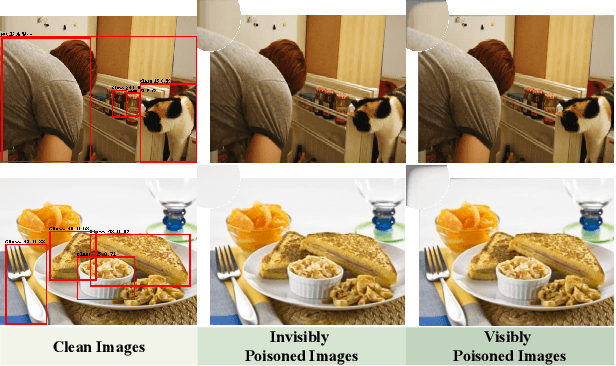
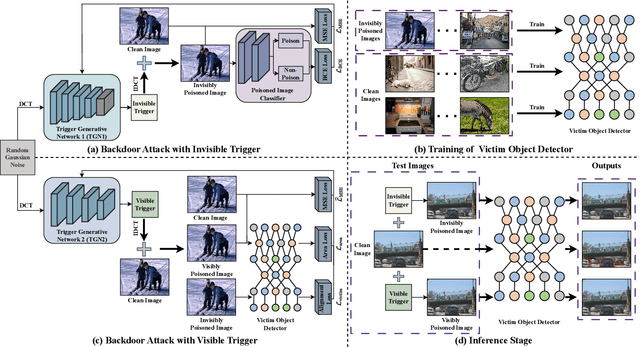
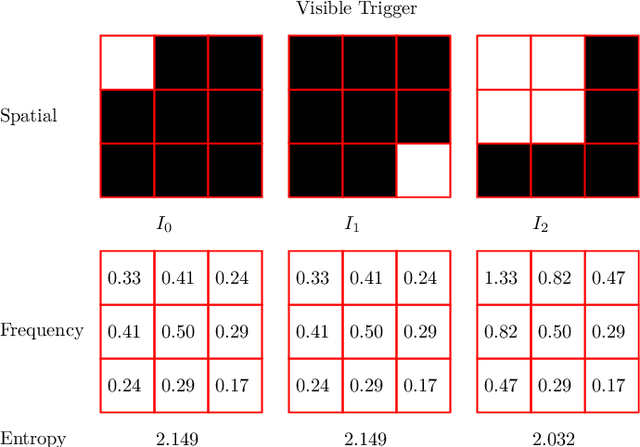
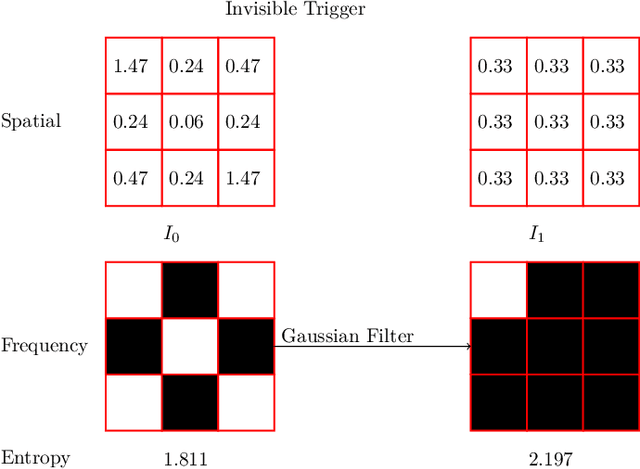
Abstract:Object detectors, which are widely used in real-world applications, are vulnerable to backdoor attacks. This vulnerability arises because many users rely on datasets or pre-trained models provided by third parties due to constraints on data and resources. However, most research on backdoor attacks has focused on image classification, with limited investigation into object detection. Furthermore, the triggers for most existing backdoor attacks on object detection are manually generated, requiring prior knowledge and consistent patterns between the training and inference stages. This approach makes the attacks either easy to detect or difficult to adapt to various scenarios. To address these limitations, we propose novel twin trigger generative networks in the frequency domain to generate invisible triggers for implanting stealthy backdoors into models during training, and visible triggers for steady activation during inference, making the attack process difficult to trace. Specifically, for the invisible trigger generative network, we deploy a Gaussian smoothing layer and a high-frequency artifact classifier to enhance the stealthiness of backdoor implantation in object detectors. For the visible trigger generative network, we design a novel alignment loss to optimize the visible triggers so that they differ from the original patterns but still align with the malicious activation behavior of the invisible triggers. Extensive experimental results and analyses prove the possibility of using different triggers in the training stage and the inference stage, and demonstrate the attack effectiveness of our proposed visible trigger and invisible trigger generative networks, significantly reducing the mAP_0.5 of the object detectors by 70.0% and 84.5%, including YOLOv5 and YOLOv7 with different settings, respectively.
Event Data Association via Robust Model Fitting for Event-based Object Tracking
Oct 25, 2021



Abstract:Event-based approaches, which are based on bio-inspired asynchronous event cameras, have achieved promising performance on various computer vision tasks. However, the study of the fundamental event data association problem is still in its infancy. In this paper, we propose a novel Event Data Association approach (called EDA) to explicitly address the data association problem. The proposed EDA seeks for event trajectories that best fit the event data, in order to perform unifying data association. In EDA, we first asynchronously gather the event data, based on its information entropy. Then, we introduce a deterministic model hypothesis generation strategy, which effectively generates model hypotheses from the gathered events, to represent the corresponding event trajectories. After that, we present a two-stage weighting algorithm, which robustly weighs and selects true models from the generated model hypotheses, through multi-structural geometric model fitting. Meanwhile, we also propose an adaptive model selection strategy to automatically determine the number of the true models. Finally, we use the selected true models to associate the event data, without being affected by sensor noise and irrelevant structures. We evaluate the performance of the proposed EDA on the object tracking task. The experimental results show the effectiveness of EDA under challenging scenarios, such as high speed, motion blur, and high dynamic range conditions.
Hierarchical Representation via Message Propagation for Robust Model Fitting
Dec 29, 2020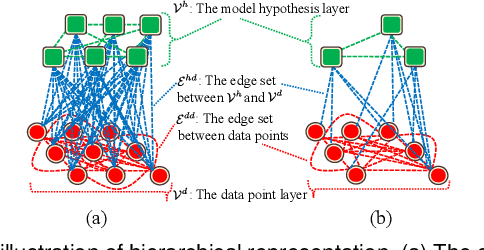


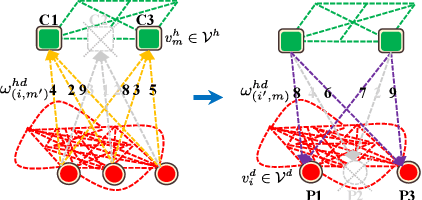
Abstract:In this paper, we propose a novel hierarchical representation via message propagation (HRMP) method for robust model fitting, which simultaneously takes advantages of both the consensus analysis and the preference analysis to estimate the parameters of multiple model instances from data corrupted by outliers, for robust model fitting. Instead of analyzing the information of each data point or each model hypothesis independently, we formulate the consensus information and the preference information as a hierarchical representation to alleviate the sensitivity to gross outliers. Specifically, we firstly construct a hierarchical representation, which consists of a model hypothesis layer and a data point layer. The model hypothesis layer is used to remove insignificant model hypotheses and the data point layer is used to remove gross outliers. Then, based on the hierarchical representation, we propose an effective hierarchical message propagation (HMP) algorithm and an improved affinity propagation (IAP) algorithm to prune insignificant vertices and cluster the remaining data points, respectively. The proposed HRMP can not only accurately estimate the number and parameters of multiple model instances, but also handle multi-structural data contaminated with a large number of outliers. Experimental results on both synthetic data and real images show that the proposed HRMP significantly outperforms several state-of-the-art model fitting methods in terms of fitting accuracy and speed.
Hypergraph Optimization for Multi-structural Geometric Model Fitting
Feb 13, 2020

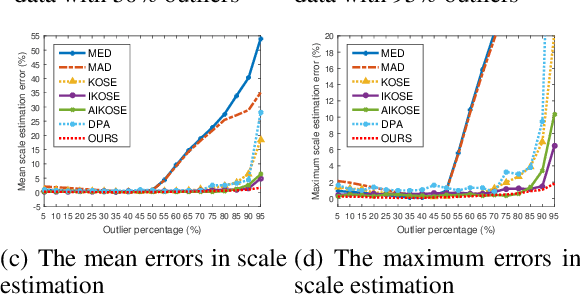
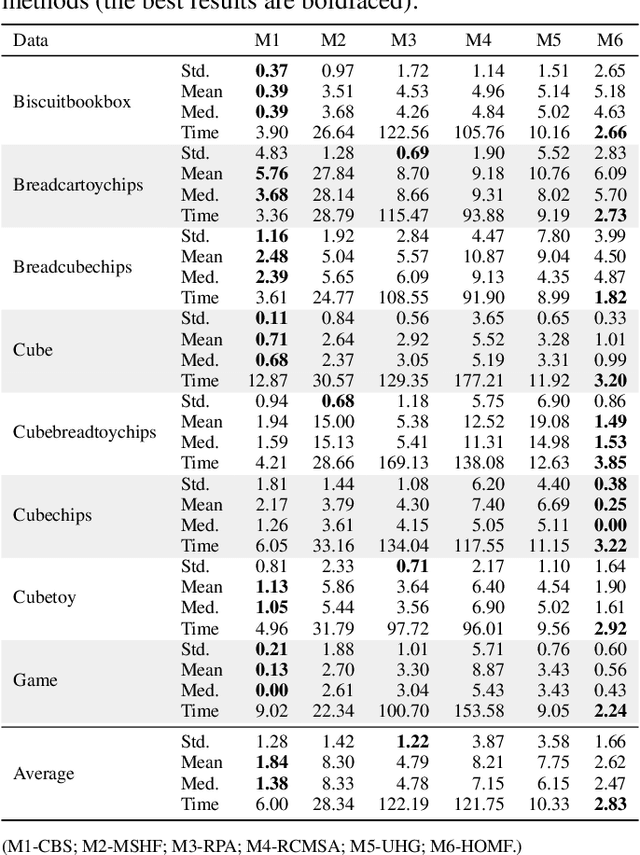
Abstract:Recently, some hypergraph-based methods have been proposed to deal with the problem of model fitting in computer vision, mainly due to the superior capability of hypergraph to represent the complex relationship between data points. However, a hypergraph becomes extremely complicated when the input data include a large number of data points (usually contaminated with noises and outliers), which will significantly increase the computational burden. In order to overcome the above problem, we propose a novel hypergraph optimization based model fitting (HOMF) method to construct a simple but effective hypergraph. Specifically, HOMF includes two main parts: an adaptive inlier estimation algorithm for vertex optimization and an iterative hyperedge optimization algorithm for hyperedge optimization. The proposed method is highly efficient, and it can obtain accurate model fitting results within a few iterations. Moreover, HOMF can then directly apply spectral clustering, to achieve good fitting performance. Extensive experimental results show that HOMF outperforms several state-of-the-art model fitting methods on both synthetic data and real images, especially in sampling efficiency and in handling data with severe outliers.
 Add to Chrome
Add to Chrome Add to Firefox
Add to Firefox Add to Edge
Add to Edge